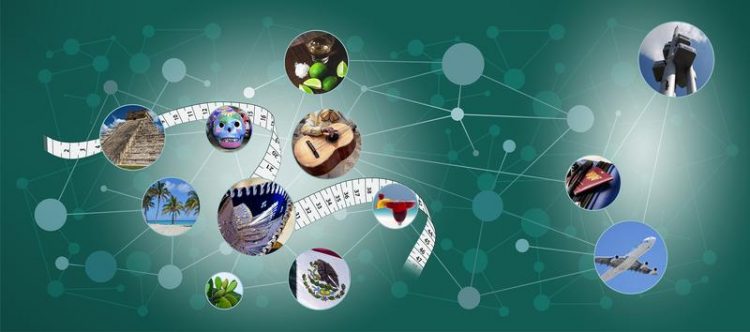Measurement of thoughts during knowledge acquisition

The study shows that new conceptual information is stored along spatial dimensions in form of a mental map located in the hippocampus - here as an example the concept of "Mexico". © MPI CBS
In a recent learning study they were able to show that new conceptual information is stored along spatial dimensions in form of a mental map located in the hippocampus.
Together with colleagues from the Donders Institute at Radboud University in Nijmegen, they observed brain activity patterns that support the idea that the neural mechanisms that support navigation in physical space might also be involved in conceptual learning.
“We, as humans, are remarkably flexible in the use of our knowledge: For instance we are able to apply what we have learned during only a few experiences in novel situations or to problems that have never been directly experienced before,” explains study author Theves.
“If you walk through the city you live in, you’re able to take a shortcut without ever having tried it before. This is because the brain represents the spatial layout of the city. This might also be the case for representing knowledge. We have a concept in mind of what distinguishes a racing car from a truck.
When we now spot an unknowkn vehicle, we can use the relation of relevant properties, such as engine power and weight, to locate the new vehicle in our mental map in order to identify which type of vehicle we’re looking at. So we might draw conclusion unconsciously, by placing the new exemplars appropriately within a mental map.”
In their study, participants acquired a new concept over the course of two days. For this purpose they learned to classify novel abstract images into two categories based on specific image-features. Following this learning phase, the MRI scanner was used to test whether the brain combines and stores the feature dimensions that were relevant to the acquisition of the concept in a map-like format in which individual images can be located.
“We’re interested in the learning process of new concepts because it allows us to measure distances within conceptual space as the knowledge is acquired,” says Theves.
The scientist and her colleagues from the Netherlands determine how close objects are in mental space, by recording signals of the hippocampus in response to the objects. “What's interesting is that we can see an exact scaling of the objects in space, from which we conclude that the new information is organized in the brain in a map-like format.”
The flexibility with which humans can apply knowledge, is likely due to this organizational structure, concludes Stephanie Theves. In the long term, the results could help to explain key aspects of human intelligence – such as the ability to infer or to generalize. Understanding how knowledge representations are acquired and organized in the brain could also be used to optimize teaching methods for efficient learning.
Stephanie Theves
Postdoc
Email: theves@cbs.mpg.de
Prof. Dr. Christian Doeller
Director
Phone: +49 341 9940-2275
Fax: +49 341 9940-2204
Email: doeller@cbs.mpg.de
The Hippocampus Encodes Distances in Multidimensional Feature Space
Media Contact
All latest news from the category: Life Sciences and Chemistry
Articles and reports from the Life Sciences and chemistry area deal with applied and basic research into modern biology, chemistry and human medicine.
Valuable information can be found on a range of life sciences fields including bacteriology, biochemistry, bionics, bioinformatics, biophysics, biotechnology, genetics, geobotany, human biology, marine biology, microbiology, molecular biology, cellular biology, zoology, bioinorganic chemistry, microchemistry and environmental chemistry.
Newest articles

High-energy-density aqueous battery based on halogen multi-electron transfer
Traditional non-aqueous lithium-ion batteries have a high energy density, but their safety is compromised due to the flammable organic electrolytes they utilize. Aqueous batteries use water as the solvent for…

First-ever combined heart pump and pig kidney transplant
…gives new hope to patient with terminal illness. Surgeons at NYU Langone Health performed the first-ever combined mechanical heart pump and gene-edited pig kidney transplant surgery in a 54-year-old woman…

Biophysics: Testing how well biomarkers work
LMU researchers have developed a method to determine how reliably target proteins can be labeled using super-resolution fluorescence microscopy. Modern microscopy techniques make it possible to examine the inner workings…





















